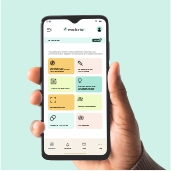Surveillance and Monitoring
Surveillance and Monitoring
Surveillance and monitoring form the backbone of malaria control because they provide the continuous flow of information needed to detect trends, identify emerging threats, and evaluate the impact of interventions. The Surveillance and Monitoring program in MalariaX integrates case data, environmental reports, vaccination progress, and community alerts into a single digital ecosystem. This creates a real-time overview of malaria activity that strengthens decision-making at all levels.
Traditional surveillance systems often rely on delayed reports or incomplete data. By the time information reaches health authorities, outbreaks may have already spread. MalariaX transforms this dynamic by enabling real-time surveillance. Every reported symptom, confirmed case, or environmental hazard becomes part of a live data system. Programme managers can immediately see where new cases are emerging, which areas require follow-up, and where response teams should be deployed.
The monitoring component of the program tracks the performance of interventions such as bed net distribution, environmental actions, volunteer activities, and vaccination turnout. This helps leaders understand what strategies are working and where additional support is needed. Continuous monitoring ensures that malaria control remains efficient and adaptive rather than stagnant or outdated.
Surveillance also helps predict future risks. By analyzing patterns over time, health authorities can identify seasonal trends, climate influences, and recurring hotspots. This predictive capability is essential for planning ahead and preparing communities before high-risk periods begin.
The program improves transparency by providing clear data for partners, organizations, and government agencies. This transparency builds trust and strengthens collaboration. When stakeholders have access to accurate and timely information, they can coordinate more effectively and avoid duplication of effort.
Surveillance and monitoring ultimately ensure that no risk goes unnoticed. The program turns daily community reports into powerful intelligence, giving health systems the ability to act quickly and protect lives. Through continuous observation, rapid analysis, and smart coordination, the Surveillance and Monitoring program brings Africa closer to a future where malaria can no longer hide, spread, or surprise communities.

 Our Programs
Our Programs
